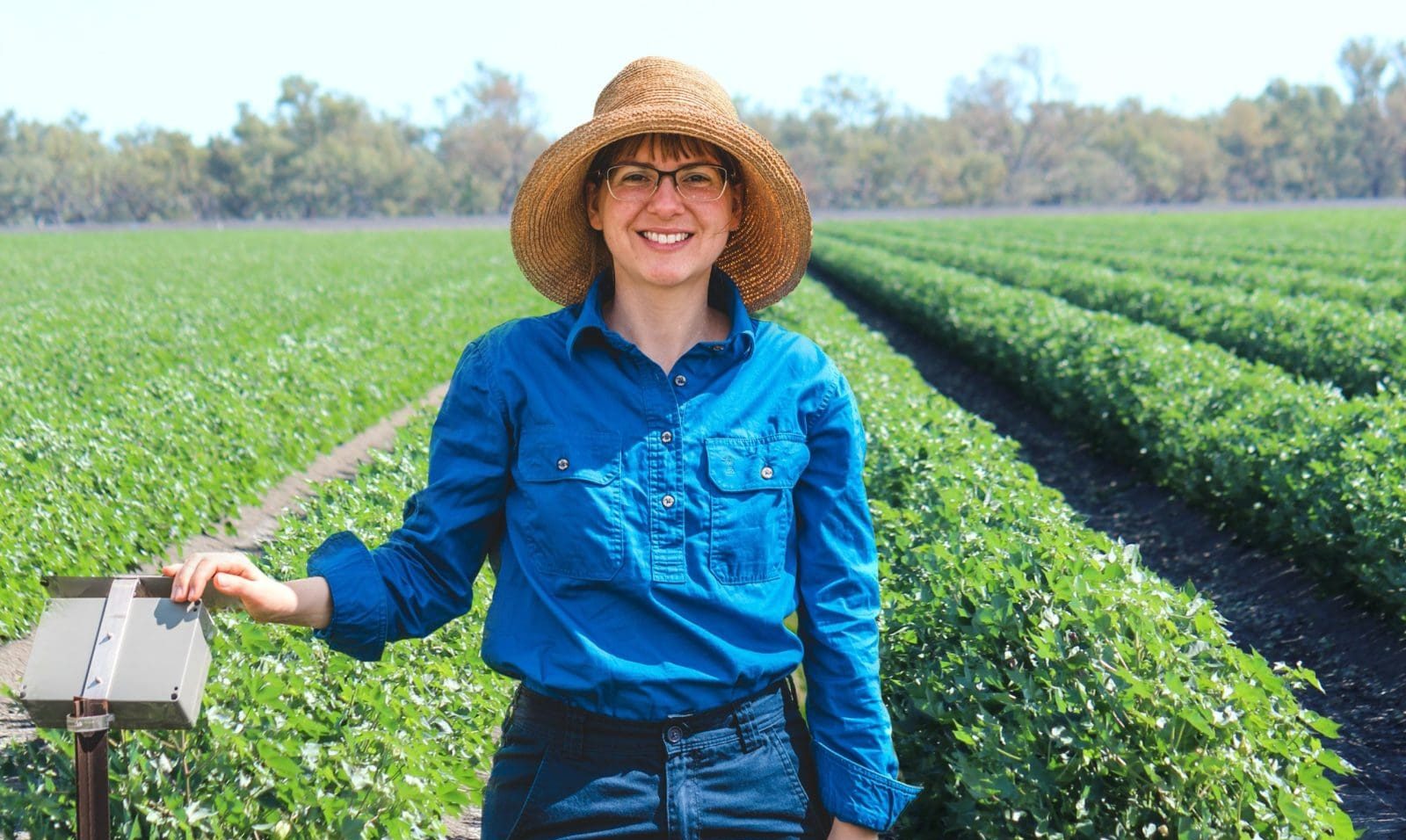
Dr Alison McCarthy. Photo: UniSQ
THE Cotton Research and Development Corporation has facilitated the commercialisation of ground-breaking research by the University of Southern Queensland’s Centre for Agricultural Engineering, empowering cotton growers to optimise irrigation scheduling from the crucial first irrigation.
Through collaborative efforts between CRDC, Australia’s national science agency CSIRO, the UniSQ, and the Smarter Irrigation for Profit program, an algorithm has been licensed to Goanna Ag, providing a vital tool to support growers in their irrigation decision-making process.
The introduction of a new algorithm, pioneered by UniSQ mechatronic engineer Alison McCarthy, marks a significant advancement in this field.
Leveraging multiarray sensors, the solution distinguishes between canopy and bare-soil temperatures.
This advancement allows for early-season canopy-temperature measurements, particularly pertinent for the first irrigation, while eliminating the necessity to adjust the height of sensors throughout the crop’s growth cycle.
“It is exciting for my research with CRDC to be commercialised and available to growers in the coming cotton season,” Dr McCarthy said.
“The collaboration across institutions and geographic locations in the Smarter Irrigation for Profit program enabled us to develop and test the algorithm under a range of conditions.
“The algorithm linked to Goanna Ag’s GoField service will even further broaden th applications for canopy sensing technology, as well as save labour and improve precision in sensing for irrigation management.”
The solution builds on previous research conducted by CSIRO in conjunction with CRDC.
The initial study involved the development of stress-time thresholds for cotton-irrigation timing that relied primarily on canopy-temperature measurements.
The original algorithm, created by the CSIRO team at the Australian Cotton Research Institute, was subsequently made available through Goanna Ag in 2019.
This technology has since enhanced irrigation practices within the cotton industry.
“The initial irrigation decision, especially during the early growth stages, has historically posed challenges for growers due to limited technological support,” Goanna Ag chief executive officer Alicia Garden said.
“Traditional methods, such as visual inspections and soil probes, proved unreliable.
“The cutting-edge innovation presented by Dr McCarthy’s algorithm fills this gap by providing decision support for the critical first irrigation stage.”
The commercialisation of this research through Goanna Ag will boost grower decision-making capabilities, and improve water-use efficiency within the cotton industry.
Goanna Ag will incorporate this technique into its flagship GoField service, which is already enabling allows growers to optimise irrigation events.
“While the immediate impact of this technology is evident within the cotton industry, it is anticipated that the new technique may find application in other crops, such as legumes, further expanding its reach and benefits to agricultural communities,” CRDC innovation broker Susan Maas said.
By supporting the commercialisation of this crucial research, CRDC, Goanna Ag, and UniSQ continue to drive innovation, sustainability, and precision agriculture within the cotton industry, positively influencing the future of global agriculture.
Source: UniSQ

HAVE YOUR SAY